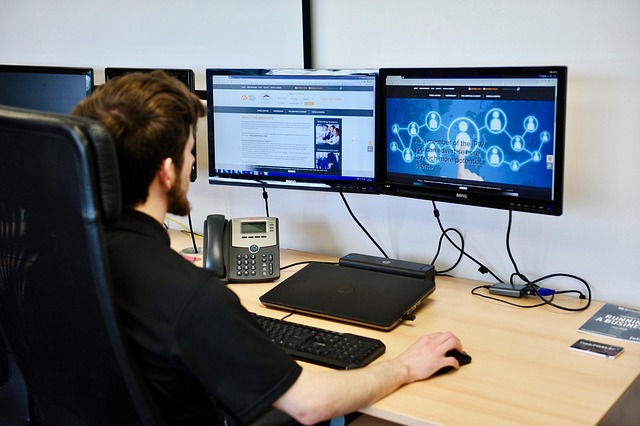10 Web Design Trends Shaping the Future in 2025
Explore the latest web design trends set to revolutionize digital experiences and shape the future of online interactions by 2025.
Table of Contents
Introduction
As technology continues to advance, web design trends evolve to enhance user experience, visual aesthetics, and functionality. By 2025, the landscape of web design will be significantly transformed with innovative trends that will redefine the way users interact with web pages. This article delves into the top 10 web design trends that are shaping the future, offering insights into each trend's relevance and potential impact on the digital world.
Immersive Experiences
Immersive web experiences are becoming essential as users crave deeper, more engaging interactions. By 2025, websites will prioritize creating environments that captivate users through techniques such as 3D graphics, virtual reality, and augmented reality. These experiences will not only enhance user engagement but also offer new ways of storytelling and brand interaction.
- 3D Graphics: Using advanced visuals to create depth and realism.
- Virtual Reality (VR): Simulating realistic environments for intricate user experiences.
- Augmented Reality (AR): Merging digital elements with physical surroundings for interactive experiences.
AI-Driven Design Tools
AI-driven design tools are revolutionizing how websites are crafted. With the ability to automate mundane tasks, these tools allow designers to focus on creativity and innovation. By 2025, we can expect AI to assist in personalized design elements and real-time user feedback, resulting in highly tailored web experiences that adapt to individual user needs.
- Automation: AI managing repetitive tasks to optimize workflow.
- Personalization: Using AI to tailor designs for individual preferences.
- Real-Time Feedback: Instantly adapting designs based on user interactions.
Micro-Interactions
Micro-interactions refer to subtle design elements that enhance user engagement by providing feedback or guiding the user through a process. These small interactions play a big role in creating intuitive and satisfying web experiences. By 2025, the focus on improving micro-interactions will intensify, making websites more user-friendly and interactive.
Neumorphism
Neumorphism, a blend of skeuomorphism and flat design, emphasizes soft shadows and highlights to create elements that appear to be layered and tactile. This trend portrays sophistication and minimalism, leading to aesthetically pleasing interfaces that are intuitive and calming. Expect neumorphism to become a mainstream design aesthetic by 2025, influencing UI components widely across digital platforms.
Augmented Reality Integration
The integration of augmented reality (AR) in web design is poised to transform user interaction by making web pages more interactive and life-like. By 2025, AR technologies will become commonplace in e-commerce, real estate, and various other industries, allowing users to visualize products or layouts within their own environments seamlessly.
Voice-Activated Interfaces
Voice-activated interfaces are charting new paths in web design by offering hands-free browsing experiences. These interfaces enable users to navigate and control web environments using voice commands, increasing accessibility and convenience. By 2025, the integration of voice-activated functionalities will enhance user interaction across diverse devices, shaping seamless and intuitive user experiences.
Dark Mode Standardization
Dark mode has become an essential feature in web design, offering aesthetic appeal and reducing eye strain in low light conditions. As we approach 2025, dark mode is expected to become more universally adopted, with design standards evolving to ensure compatibility and enhance visual consistency across platforms.
Conclusion
The future of web design lies in innovation and user-centric trends such as immersive experiences, AI-driven tools, and voice interfaces. As we advance toward 2025, these trends will redefine online interaction, pushing the boundaries of technology and creativity in web design. Staying ahead of these trends will be crucial for businesses looking to enhance their digital presence and user engagement.
FAQs
What are immersive experiences in web design?
Immersive experiences involve using technology to create engaging, realistic interactions on websites through 3D graphics, VR, and AR.
How does AI influence web design?
AI automates design tasks, personalizes user experiences, and offers real-time feedback, transforming the web design process.
What is neumorphism?
Neumorphism is a design trend that combines skeuomorphism and flat design to create soft, layered, and tactile visual elements.
Will voice interfaces be a dominant trend?
Yes, as they offer hands-free browsing, voice interfaces are set to enhance accessibility and usability across devices.
Why is dark mode important in web design?
Dark mode reduces eye strain and enhances visual appeal, making it a crucial feature for modern web design.
What is the role of micro-interactions in web design?
Micro-interactions improve usability by providing feedback and engaging users subtly during interactions with a website.
How will augmented reality change web design?
AR will make web pages more interactive by allowing users to visualize products and layouts directly in their environments.
What industries will benefit the most from AR integration?
Industries like e-commerce and real estate will benefit significantly by offering enhanced visualization and interactive experiences.
